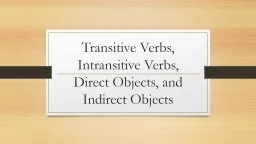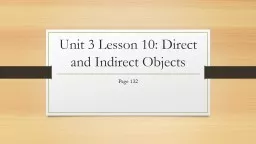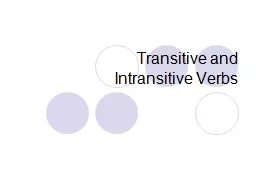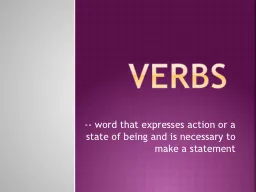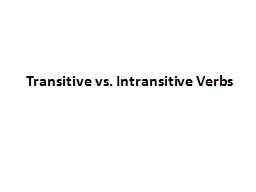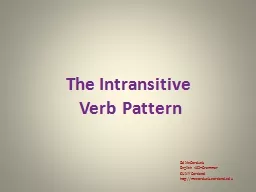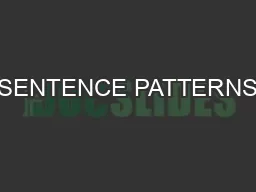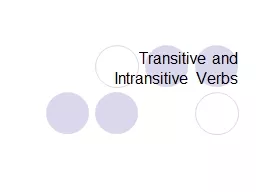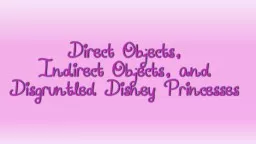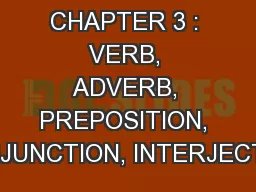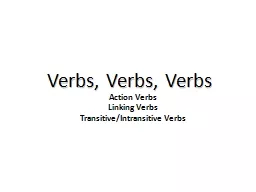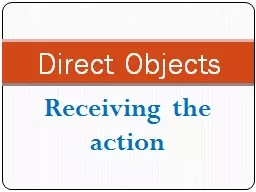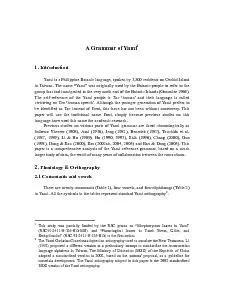PPT-Transitive Verbs, Intransitive Verbs, Direct Objects, and I
Author : test | Published Date : 2016-05-16
Action Verbs Express physical or mental activity Run Ponder Think Throw Contemplate Transitive Verb A transitive verb is an action verb that has a direct objecta
Presentation Embed Code
Download Presentation
Download Presentation The PPT/PDF document "Transitive Verbs, Intransitive Verbs, Di..." is the property of its rightful owner. Permission is granted to download and print the materials on this website for personal, non-commercial use only, and to display it on your personal computer provided you do not modify the materials and that you retain all copyright notices contained in the materials. By downloading content from our website, you accept the terms of this agreement.
Transitive Verbs, Intransitive Verbs, Direct Objects, and I: Transcript
Download Rules Of Document
"Transitive Verbs, Intransitive Verbs, Direct Objects, and I"The content belongs to its owner. You may download and print it for personal use, without modification, and keep all copyright notices. By downloading, you agree to these terms.
Related Documents

